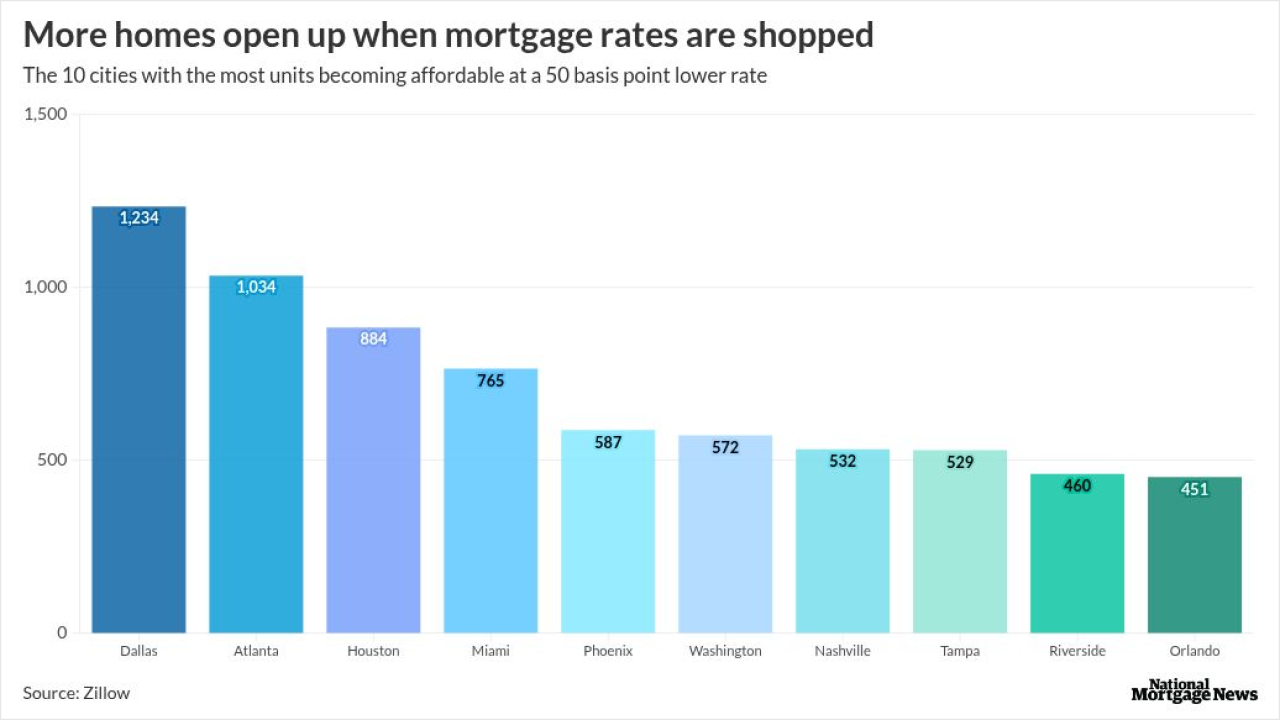Modifications have begun in earnest as forbearance has receded, and it looks like banks are having the most success qualifying borrowers for it, according to recent studies.
When the bulk of forbearance exits got underway between the third and fourth quarters last year, banks had higher modification rates than non-depositories, starting with 40%
“The bank borrowers are in a somewhat better position to be able to come off of forbearance and cure based on some of the data trends I've seen. The non-bank side is straggling,” said Fitch Director Richard Koch in an interview about the report, which tracks servicing data points at the company and aggregate level.
Repayment options at bank servicers, including cures, rose notably in the fourth quarter to 26% from 11% the previous three months. The repayment rate, including cures, also increased for nonbanks, but less notably, rising to 7% from 6%. Also, the 60-plus day delinquency rate jumped dramatically in the fourth quarter for nonbanks to 5% from 2%, whereas it remained even at 2% for depositories, Koch said.
These positive loan-performance indicators for depositories raise questions about why forbearance rates for private loans in bank portfolios have been relatively high and slow to fall off if the loans depositories are handling generally have a stronger borrower credit profile and qualify more easily for modifications.
During the past week, forbearance in private loans within either bank portfolios or securities fell by just 6.7% as compared to 8.1% for Federal Housing Administration-insured and Department of Veterans Affairs-guaranteed products and 11.1% for government-sponsored enterprise-backed mortgages.
A deeper dive into the numbers shows the slower forbearance exits stem more from the influence of the private-label securities market than bank portfolios.
PLS plans were up 2% from a month ago while they were down 15% for bank portfolios. That’s in part because PLS loans with forbearance have been more prone to be
In addition, banks don’t exclusively use portfolio products to lend. When it comes to government-related sectors of the market, depositories have been more active in the market for mortgages backed by Fannie Mae and Freddie Mac, which have had low forbearance rates throughout the pandemic, Koch noted.
During the past week, the Fannie Mae and Freddie Mac forbearance rate was just 0.7% according to a weekly blog by Andy Walden, vice president, enterprise research and strategy, at Black Knight. In comparison, the forbearance rate for bank and PLS loans combined was 1.8%. It was 2% for FHA and VA mortgages.
Just 1.3% of loans remain in forbearance, according to Black Knight.





